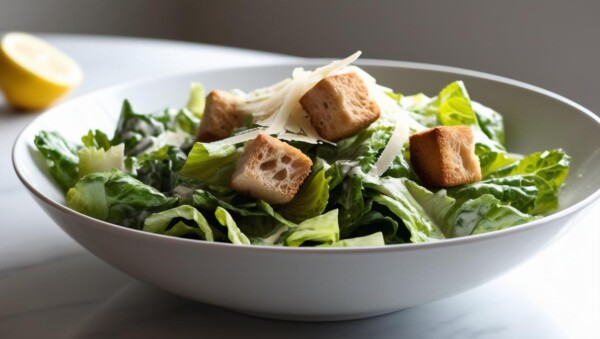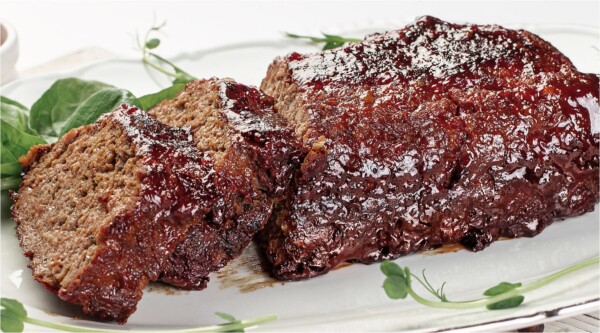Level Up Your Home Cooking with These 5 Simple Tools
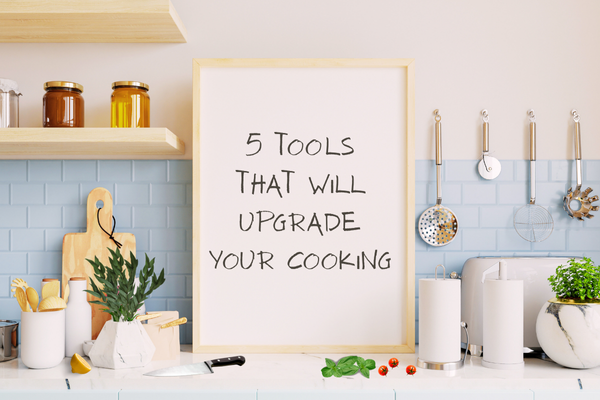
If you’re new to cooking or just want to make better meals without a lot of extra effort, the right kitchen tools can make all the difference. In this post I’m sharing five essential kitchen tools that every beginner (or hopeful home cook) should have. These affordable, easy-to-use items will help you cook smarter, not harder, and just maybe you’ll enjoy being in the kitchen more.
Perhaps you’ve just moved out on your own, or you’ve realized that ordering takeout four nights a week isn’t doing your budget (or your jeans!) any favours. Maybe you are trying to eat healthier, or you’re bored of ‘girl dinner’ eaten straight from the fridge. Whatever your reason, you’re here because you want to cook more at home. You don’t need to love it, but you’d like it to be less of a hassle. Totally understandable. Let’s keep it simple.
You don’t need a bunch of fancy gadgets to make good food. You just need a few reliable tools that do their job well, and make your life easier in the kitchen. Here are five tools that can level-up your cooking game.
1. Instant Read Thermometer (Analog Style)
It’s not flashy. It doesn’t sync with your phone. It won’t alert you with beeps or buzzes. But this classic little thermometer can save your dinner.

What it does:
It checks the internal temperature of your food quickly and accurately. Oven safe and no batteries needed. This model in particular has the minimum temperatures for different types of meat marked, which is super handy!
Why it matters:
Cooking meat can be tricky. You don’t want to guess if your chicken is done — you want to know. An instant-read thermometer takes the guesswork out and helps you avoid serving something undercooked, or dry as a bone.
How to use it:
Stick it into the thickest part of the meat, wait a few seconds, and read the dial. Chicken should hit 165°F. Pork should be at least 150°F (up to 170°F for well done), and beef (medium) 160°F.
Bottom line: it’s small, simple, and does one job really well. Honestly, out of all of the kitchen tools, this is the most important in my opinion. It’s too much of a guessing game otherwise, that you’re bound to loose more often than not.
2. Kitchen Shears
Once you have a pair of kitchen shears, you’ll wonder how you ever got by without them. They’re basically scissors, but built tougher for food prep.
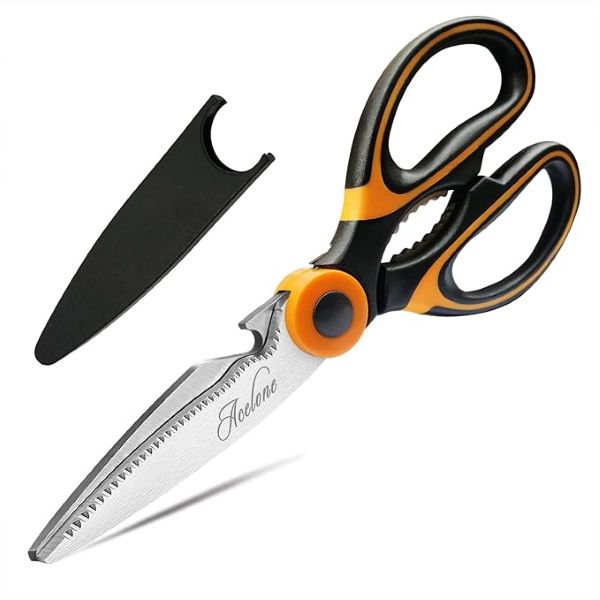
What they do:
Cut herbs, trim meat, open packaging, snip bacon, slice pizza, even spatchcock a chicken if you’re feeling adventurous!
Why they matter:
Sometimes using a knife just isn’t practical, or safe. Shears make kitchen tasks quicker and a lot more manageable, especially for beginners. And they’re a lot safer when you’re dealing with slippery or oddly shaped foods.
How to use them:
You can do fancy things like cut fresh chives directly into your scrambled eggs, or snip herbs onto pasta, but honestly, I use them the most to trim fat or cube meat before cooking. They’re also easy to clean (I throw mine in the dishwasher to sanitize them), easy to store, and super versatile.
3. A Good Chef’s Knife
You don’t need a knife block with eight different blades. Just one solid, all-purpose chef’s knife will go a long way.
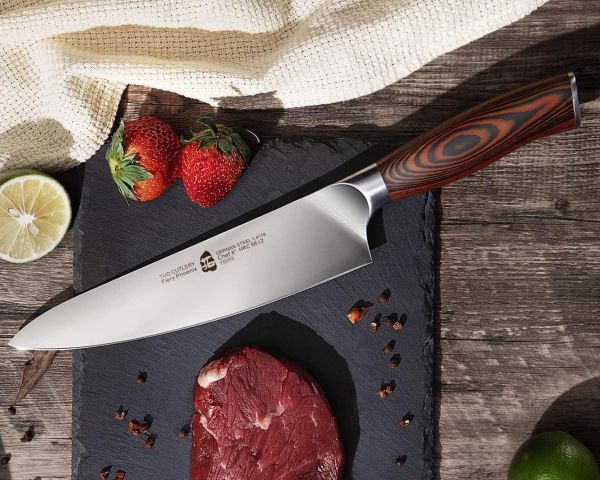
What it does:
Chops, slices, dices — pretty much everything you need in basic meal prep.
Why it matters:
A good knife makes food prep faster and easier. A bad knife? It makes everything harder. You end up pressing down more than slicing, which isn’t just frustrating, it can actually be dangerous.
How to use it:
Use it for everything from chopping onions for stir-fry to slicing fruit for breakfast. The key is keeping it sharp. There is nothing worse in the kitchen than a dull knife! I promise you, if you get yourself a decent knife, you will enjoy cooking more.
Tip: You don’t have to spend a fortune. Look for something with a solid feel, good balance, and a sharp blade that holds its edge. It should feel comfortable in your hand. Also, take your knife to be professionally sharpened twice a year. Just Google where to get knives sharpened near you.
4. Microplane
This tool doesn’t get enough credit. It’s a game changer when it comes to adding flavor with minimal effort.

What it does:
Finely grates ingredients like garlic, ginger, parmesan, citrus zest — even chocolate.
Why it matters:
You’d be surprised what a difference a bit of lemon zest or freshly grated cheese can make. It’s one of the easiest ways to elevate your meals without needing new recipes or extra time.
How to use it:
Grate garlic into olive oil for pasta. Add lemon zest to roasted asparagus. Sprinkle freshly grated parmesan over a bowl of soup or pasta. Grate fresh nutmeg into banana pancake batter. It’s small, easy to clean, and endlessly useful.
5. Small Blender or Food Chopper (Magic Bullet Style)
You don’t need a huge blender with a dozen settings. A compact one does the job without taking up all your counter or cupboard space.

What it does:
Makes smoothies, whizzes-up salad dressings or pesto, mixes sauces and marinades, makes dips — the list goes on and on.
Why it matters:
It’s fast and convenient. Whether you’re throwing together a quick salad dressing or need to mince onions without crying, this tool gets it done with minimal mess.
How to use it:
Make a smoothie with frozen fruit and a splash of almond milk. Blend up a simple salad dressing. Toss in garlic, fresh basil, olive oil, pine nuts and parmesan for a quick pesto. Or make hummus from canned chickpeas in under a minute.
Clean-up is usually just one cup and a blade. That’s it. I throw mine in the top rack of the dishwasher.
Wrap-Up
If you want to get better at cooking without overcomplicating things, these five tools are a great place to start. They’re practical, affordable, and easy to use; exactly what you need when you’re learning, or trying to make everyday cooking more enjoyable.
Happy cooking!
Ps – if you want to try out your new tools, check out these tried-and-true recipes; follow the links below.
The Best Meatloaf E-V-E-R
The Best Caesar Salad Recipe

